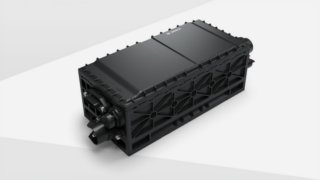According to BBC, there are over half a million pieces of debris floating around the Earth’s orbit. Most debris within the atmosphere are lost parts from space crafts, disused rocket stages or waste from astronauts. The Earth is currently facing a climate emergency due to increasing greenhouse gasses, loss of natural resources and rising sea levels. According to the EPA, in 2018, the US produced 292.4 million tons of municipal solid waste (MSW) and almost half of that waste (49.997%) went to landfills around the country. Year after year since recording first began in the 1960s—and the US has never had a national recycling rate (recovered material + composting) higher than 35%. Not only this, according to cbenvironmental, the UK produces more than 100 million tonnes of waste every year.
As of now, there are minimal laws on disposing waste into the atmosphere. Does this mean that we can solve all our waste problems by disposing them into space? Within this article, I am going to explain the advantages and disadvantages of disposing waste in space and whether it is becoming the latest e-waste landfill trend.
Earth – Current Climate Stage
The Earth is quickly running out of waste storage which is causing numerous problems for wildlife, especially within the ocean. Many small marine animals consume waste in order to fulfil their hunger and survive, and have been for decades. However, most of the waste consumed (such as plastic) is extremely harmful for the wildlife and decreases the species population, especially as more harmful substances are entering the ocean. According to ‘Two Oceans Aquarium’, all seven species of endangered sea turtles get entangled or ingest plastic, due to their size and lack of knowledge on harmful substances. As well as this, 50-80% of dead sea turtles have been found with plastic inside them, which is usually the route cause to their deaths, according to Triplepundit.com. Not only this, seabirds are unintentionally beginning to feed plastic to their chicks, resulting in 98% of chicks having plastic in their stomach, based on a study.
Cameron, Ward, Senior Vice President Global Electronics at Allied Electronics & Automation: “From GPS and mapping to global communications and weather forecasting, so much of the technology we enjoy on Earth relies on technology that is based in space, so when we think about all the critical infrastructure that’s up there, we absolutely shouldn’t view space as a dumping ground.
As technology evolves at an increasingly rapid pace, we have to think about the e-waste stream that is associated with that. Recycling is certainly better than disposing of e-waste after a single use, but reducing the overall amount of e-waste we generate by making products that last longer is a more sustainable approach. So the question is how do we leverage technology, automation, and maintenance to do that?
One key way is service life extension for electronics — and distributors play a critical role in helping customers with maintenance and repair of their equipment, by ensuring that spares and replacement parts are always available. If we can help our customers extend the service lives of their electronic equipment, then we can keep that equipment out of the disposal pipeline for a longer time and help operators save money — everyone wins.
Can debris fall from space?
The answer to this is – yes! According to Nesdis, on average, a total of between 200-400 tracked objects enter Earth’s atmosphere every year. Most debris falling from space is either burnt during the transition from space to earth or disintegrate through the atmosphere.
Dangers of disposing e-waste into space
Let’s start with human dangers of disposing waste into space. Every year, only a few astronauts get the opportunity to travel into space due to the cost and safety restrictions. If there were masses of debris (waste) within the atmosphere – astronauts would be in danger because their suits aren’t designed to protect them from debris traveling at moderate speeds. According to NASA, space waste can reach speeds of 18,000 miles per hour. Therefore, if debris was to collide with other debris, it could potentially create more debris from impact which cause more hazards to astronauts.
Another danger of disposing e-waste into space would be the debris colliding with satellites causing a loss of cell phone communications, GPS, internet and coordinated airfare. Currently, there are about 4,700 satellites still in space, but only an approximate 1,800 are still working. One of these 1,800 satellites could become damaged due to e-waste debris colliding into it.
According to ‘Popular Mechanics’, it would cost around $200 million to launch an Ariane V rocket and get its 15,432 pounds of payload into a stable point in Earth orbit.
Should we clean up space?
According to ‘iNews’, there is approximately 8000 tonnes of space junk circulating Earth. Space trash is dangerous for aircrafts and satellites due to potential collision problems. This problem has been widely recognized by many space agencies – so much so that companies that launch satellites have been taking steps such as deorbiting satellites when their missions are finished. According to ‘Encyclopaedia Britannica’, Tests of technologies to remove space debris by capturing pieces with a net or harpoon have been made. Proposed constellations like SpaceX’s Starlink (4,409 satellites) and Amazon.com’s Project Kuiper (3,236 satellites), which would greatly increase the number of satellites in orbit, have had to include space debris mitigation plans when seeking approval from regulatory bodies. According to National Geographic, in 2009, nearly 500 miles above Siberia, two satellites collided at some 22,300 mph, bursting into a cloud of thousands of pieces of debris. Perhaps if we were able to remove non-functional satellites, we could prevent collisions like this happening?
Advantages of disposing e-waste to space
One advantage of disposing waste into space would be less earth area needed for landfills. To this day, landfills across the globe are overcrowded and hazardous to wildlife and humans. So much so that waste from landfills are finding their way into the oceans and springs. On average, plastic takes around 450 years to decompose – around 5 generations worth. Therefore, many people would agree that it would be worthwhile to simply dispose of the waste in space rather than keeping it on Earth.
What is being done to clean up space?
According to National Geographic, JAXA, Japan’s space agency, is testing an electronic space whip that stretches six football fields long, known as the electrodynamic tether (EDT). The electrified line, nearly 2,300 feet long, is capped with a 44-pound weight. When deployed, it’s intended to knock debris out of orbit, sending it to burn up in Earth’s atmosphere. Not only this, there are talks of giant magnets in production to bring in all the non-used satellites and debris.
By Amy Leary, Marketing Manager at eBOM.com










